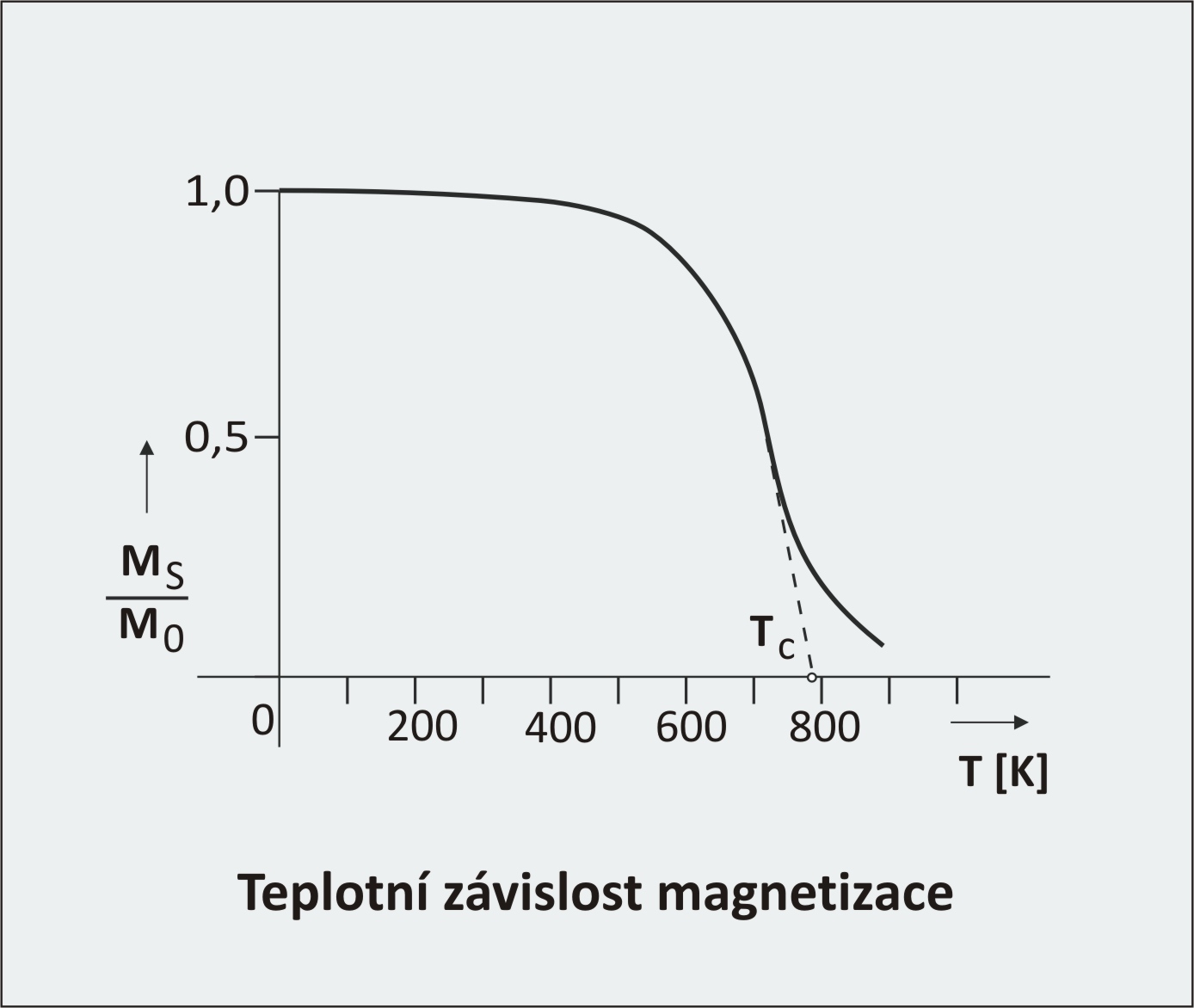Temperature and time characteristics
Curie temperature
With increasing temperature the magnetisation of all ferromagnetic materials decreases towards zero, the same also applies to permanent magnets. The temperature relationship is characterised by the so-called Curie temperature Tc, which is the intersection of the tangent of the descending section of the curve with the temperature axis (Fig. 4). When using permanent magnets it is necessary to ensure that the working temperature does not approach Tc, the safe distance is approx. up to 0.4 times Tc.
Temperature compensating alloys
The relationship of magnet parameters with temperature cannot be avoided. When working with combined magnetic circuits this undesirable property can be eliminated by using a temperature compensating magnetic shunt, placed in parallel with the air gap of the magnet. Temperature compensating alloys have a steeply descending characteristic J (T). With increasing temperature the magnetic flux is driven by the shunt to the air gap as compensation for the loss in the flux due to the temperature characteristic of the magnet proper.
Irreversible changes
Temperature and time changes of magnetisation are partly reversible and partly irreversible. The irreversible changes have their origin in the microstructure and the mechanism of magnetising the material. The action of time and temperature triggers off relaxation processes which lead to an increase in the inner energy. Macroscopically, the changes are manifested in reduced magnetisation, and possibly a reduction in other magnet parameters. However, the decrease is mostly insignificant. Where there is a requirement for an extended stability of properties over time, the magnet is subjected to artificial ageing, or alternatively thermal stabilisation (alternating temperatures). Before final magnetisation the magnet is exposed to the effects of an alternating magnetic field with a decreasing amplitude.


